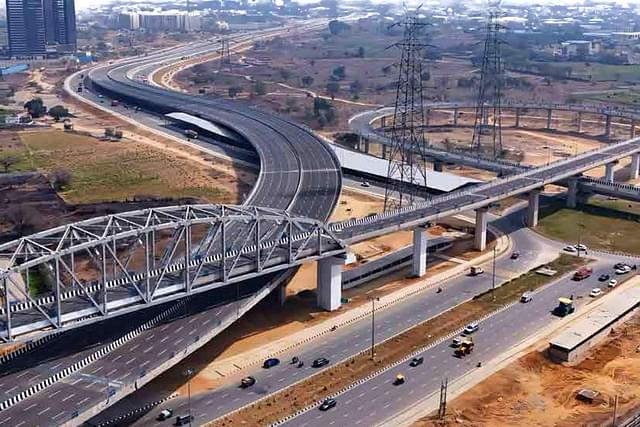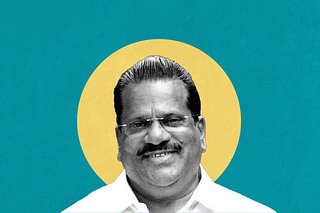Infrastructure
Explained: Government's Aggressive Debt Reduction Plan For NHAI, To Fast-Track India's Highway Growth
V Bhagya Subhashini
Apr 18, 2024, 12:01 PM | Updated Apr 22, 2024, 01:55 PM IST
Save & read from anywhere!
Bookmark stories for easy access on any device or the Swarajya app.

India's National Highway Authority of India (NHAI), the backbone of the country's road transport infrastructure, faces a significant challenge: a staggering Rs 3.4 trillion debt.
This burden restricts the agency's ability to invest in new highway projects and improvements, hindering economic growth and connectivity.
The government's ambitious goal is to reduce NHAI's debt by a substantial Rs 50,000 crore to Rs 75,000 crore annually over the next five years. This aggressive target, if achieved, would transform NHAI into a debt-free entity.
The Debt Dilemma: Stifling Infrastructure Development
NHAI's debt has ballooned over the past decade, jumping from Rs 24,188 crore in FY15 to its current level. This rapid rise is primarily due to heavy borrowing to fund ambitious highway development projects. While this strategy has undoubtedly expanded the national highway network, it comes at a cost, reports Mint.
A large portion of NHAI's budget, estimated at over Rs 30,000 crore in FY24, is currently allocated towards servicing this debt, leaving less for crucial infrastructure projects. This debt burden creates a vicious cycle, limiting NHAI's ability to generate revenue through tolls and user fees, further hindering its capacity to invest in new projects and improvements.
A Multi-Faceted Approach to Debt Reduction
Recognising the urgency of the situation, the government has formulated a comprehensive plan to tackle NHAI's debt. This plan utilises a combination of financial instruments and strategies:
Strategic Prepayment: The government will prioritise the retirement of bonds maturing between 2025 and 2030. This will free up a significant amount of resources currently allocated towards debt servicing. Additionally, negotiations are underway with long-term bondholders to explore early exit options, potentially accelerating debt reduction.
Debt Swapping for Savings: NHAI currently holds a mix of debt instruments with varying interest rates. The government plans to strategically swap high-interest debt with lower-interest loans. This will significantly reduce the overall debt servicing cost, freeing up more funds for infrastructure development.
Unlocking Revenue Streams with InvITs: Infrastructure Investment Trusts (InvITs) are financial instruments that pool money from investors and invest it in income-generating infrastructure assets like roads and bridges. The government plans to leverage InvITs to raise additional capital. The revenue generated by these investments can then be used to further reduce NHAI's debt burden.
Increased Budgetary Allocation: While NHAI has traditionally relied on borrowing to fund its projects, the government has recognised the need for a more balanced approach. The recent Union budget for FY25 saw a record allocation of Rs 1.68 trillion for NHAI, demonstrating the government's commitment to supporting infrastructure development through budgetary resources.
The Road Ahead
By significantly reducing NHAI's debt burden, the government aims to unlock a new era of robust infrastructure development in India. Free from the constraints of high debt servicing costs, NHAI will have more resources to invest in building new highways, improving existing ones, and implementing advanced safety measures.
This will contribute to a more efficient and connected national highway network, facilitating the movement of goods and people across the country. A well-developed highway network is critical for fostering economic growth, creating jobs, and promoting regional development.
Save & read from anywhere!
Bookmark stories for easy access on any device or the Swarajya app.
Introducing ElectionsHQ + 50 Ground Reports Project
The 2024 elections might seem easy to guess, but there are some important questions that shouldn't be missed.
Do freebies still sway voters? Do people prioritise infrastructure when voting? How will Punjab vote?
The answers to these questions provide great insights into where we, as a country, are headed in the years to come.
Swarajya is starting a project with an aim to do 50 solid ground stories and a smart commentary service on WhatsApp, a one-of-a-kind. We'd love your support during this election season.
Click below to contribute.





